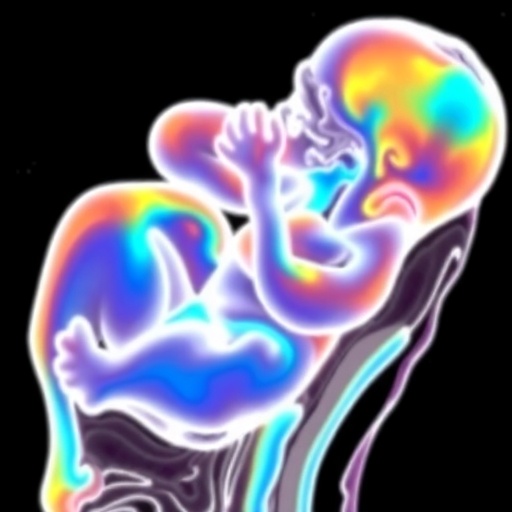In a groundbreaking advancement that promises to transform neonatal care, researchers have unveiled a novel method combining magnetic resonance imaging (MRI) radiomics with clinical data to predict motor developmental outcomes in preterm infants. This pioneering approach addresses one of the most challenging aspects of neonatal medicine: accurately identifying which preterm babies are at risk for motor developmental delays, enabling earlier, more targeted interventions that can significantly improve long-term quality of life.
Preterm birth, defined as delivery before 37 weeks of gestation, affects millions globally and is a leading cause of neurodevelopmental disabilities. Motor impairments are among the most common and debilitating outcomes for this vulnerable group, yet predicting such impairments has traditionally relied on clinical observations and relatively coarse imaging assessments. This has left a critical gap in the ability to anticipate developmental trajectories with the precision that could reshape treatment plans during the most sensitive periods of brain development.
The team behind this novel study utilized radiomics, an emerging high-throughput image analysis technique capable of extracting vast quantities of quantitative features from standard MRIs. Unlike conventional imaging, which qualitatively assesses brain structures, radiomics algorithms convert images into mineable, high-dimensional data that capture subtle tissue heterogeneity, spatial configurations, and textural nuances invisible to the naked eye. These features can unveil intricate brain microstructural changes associated with neurodevelopment.
Integrating these advanced imaging features with conventional clinical variables—such as gestational age, birth weight, and Apgar scores—the researchers developed predictive models aimed at forecasting motor skill outcomes for each infant. This hybrid model represents a major departure from previous approaches that treated imaging and clinical data in isolation, acknowledging that the interaction between biological and clinical factors profoundly influences neurodevelopment.
The study’s cohort comprised a well-characterized sample of preterm infants who underwent routine MRI scans and comprehensive clinical data collection. Using state-of-the-art machine learning techniques, the researchers trained and validated predictive algorithms, fine-tuning model parameters to balance accuracy with generalizability across diverse patient profiles. The results demonstrated robust performance, with predictive accuracy exceeding traditional methods by a significant margin.
What makes this approach particularly compelling is its potential applicability in everyday clinical workflows. MRI is already a staple in neonatal intensive care units (NICUs) for brain injury assessment, and radiomic feature extraction can be automated and integrated with electronic health records. This allows for rapid, personalized risk stratification without imposing additional burdens on medical staff or infants.
Moreover, the predictive models offer interpretable outputs, identifying specific radiomic features and clinical indicators most strongly associated with adverse motor outcomes. This transparency not only builds trust among clinicians but also provides insights into the underlying neurobiological mechanisms, paving the way for novel therapeutic targets and customized intervention strategies.
While the promise of radiomics in neonatology is immense, several challenges remain. MRI acquisition protocols need ongoing standardization to ensure uniform data quality across centers. Additionally, larger multi-center validation studies are required to confirm model robustness and to adapt predictions to varied demographics and clinical practices worldwide.
The implications of this research extend beyond predicting motor outcomes. The radiomic-clinical modeling framework could be adapted to predict cognitive development, sensory processing, and even psychiatric risks associated with preterm birth. Early identification of high-risk infants could revolutionize follow-up care, allowing clinicians to tailor therapies dynamically based on predictive insights rather than reactive diagnoses made after developmental delays manifest.
Importantly, families may also benefit from clearer prognostic information provided by these advanced models, reducing uncertainty and enabling more informed decision-making about interventions and developmental support services. The emotional toll of ambiguity in a preterm infant’s prognosis has been profound, and these technological strides promise a more compassionate and proactive approach to neonatal care.
Beyond clinical applications, the study pushes forward the field of medical imaging analytics. The successful integration of radiomics with clinical data sets a precedent for other complex conditions where heterogeneous pathologies evade straightforward prediction. As high-dimensional data proliferate in medicine, approaches demonstrated by this research will be increasingly relevant for personalized health trajectories in diverse populations.
Future research will likely focus on refining the radiomic feature sets, incorporating longitudinal data to capture dynamic brain growth patterns, and harnessing deep learning for feature discovery. By continuously recalibrating models with growing datasets, predictive accuracy can reach even higher levels, transforming neonatal neurodevelopmental prognostication into a precise science.
In conclusion, this pioneering work opens a new horizon where technology empowers clinicians to anticipate and mitigate motor developmental impairments in preterm infants with unprecedented foresight. The fusion of MRI radiomics and clinical variables embodies the next frontier of precision neonatology, setting a new standard for early neurodevelopmental risk assessment and intervention.
As healthcare increasingly embraces data-driven approaches, this study marks a significant leap forward, turning existing neonatal imaging and clinical metrics into a robust predictive toolchain that can shape the futures of the most vulnerable patients. The ripple effects of such innovations hold profound implications not only for individual infants and their families but also for healthcare systems striving to optimize outcomes through early, personalized care.
This breakthrough exemplifies a broader trend towards merging sophisticated computational analytics with routine clinical practices, heralding a future where early developmental fate is no longer a matter of chance but of informed action guided by cutting-edge science. With continued investment and validation, MRI radiomics could soon become an indispensable part of every NICU’s arsenal, radically changing how we understand and support preterm infant development.
In essence, the integration of high-dimensional imaging data with traditional clinical evaluation represents the dawn of a new era in neonatal medicine, where early detection and intervention are powered by ever smarter, more nuanced insights into the developing brain—promising brighter futures for countless preterm infants worldwide.
Subject of Research: Prediction of motor developmental outcomes in preterm infants using MRI radiomics combined with clinical variables.
Article Title: Prediction of motor developmental outcomes based on MRI radiomics in premature infants
Article References:
Meng, H., He, F., Li, F. et al. Prediction of motor developmental outcomes based on MRI radiomics in premature infants. Pediatr Res (2025). https://doi.org/10.1038/s41390-025-04377-3
Image Credits: AI Generated




